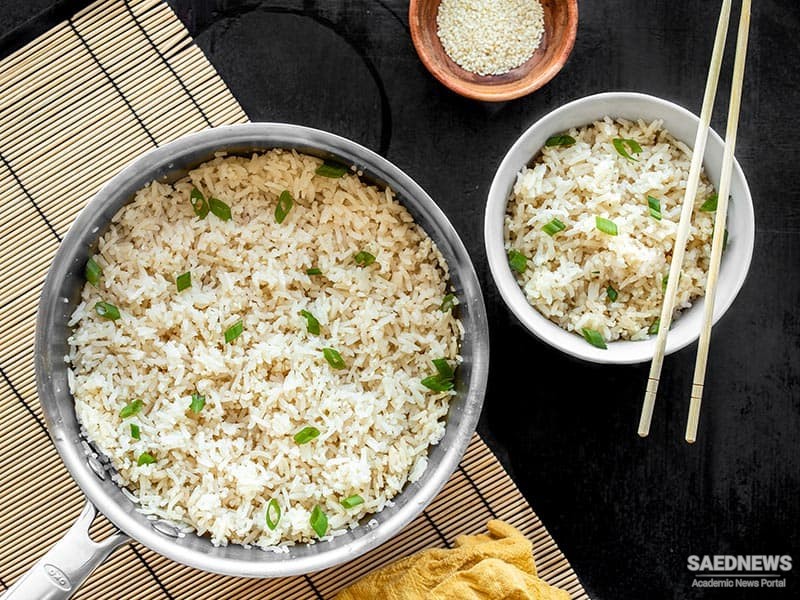People in South East Asia always eat white rice rather than brown and that is the rice to which these instructions refer. You may, of course, use brown rice if you wish, but do not serve it to an Asian, who is likely to feel – as a very good Thai friend of mine once told me she did – that such food is only fit for prisoners. Brown rice addicts will know already how to cook it so no instructions are given here.
The evaporation method of cooking rice is the one that is most often used nowadays in South East Asia, and it is the one that we recommend if you do not have an electric rice cooker on hand. Once you have mastered this method you should find that it never fails to yield a good, clean mound of rice in which the grains are soft but separate and not at all clammy. Take good-quality white rice. (Thai jasmine rice is the one we prefer for most purposes because it is at once fragrant and full of flavour. Second to that is Australian jasmine rice. Basmati rice is best for Indian food.) Put the rice in a heavy-bottomed saucepan which has a tight-fitting lid, pour plenty of water over it and stir well with the hands to dislodge the loose starch adhering to the grains. Strain out the water and repeat as many times as necessary until the water to be discarded is no longer cloudy.
Add fresh cold water to the level of a finger joint above the rice. No matter how much rice you use, nor how large the saucepan, this watercovering always represents the right amount. Do not add salt as it spoils the flavour of the rice. Bring rapidly to the boil over a high heat with no lid. Put the lid on very loosely, turn the heat down just enough to stop the rice from boiling over, and boil for about 10 minutes until the water is all absorbed and the steam is escaping through holes in the surface of the rice. (When we describe the water as being totally absorbed, that means there should be no liquid left beneath the surface of the rice.)
Now adjust the lid to fit tightly, and turn the heat to very low for a further 10 minutes or so. Then, without stirring the rice, wrap the entire saucepan in either a blanket or a large towel, and leave it aside for about another 20 minutes or until you are ready. The beauty of this system is that the rice will not only cook perfectly but it will also stay hot until you are ready for it and thus allow you to focus your attention on the other parts of the meal.


 Meygoo Polo: Shrimp, Rice and Fantastic Herbs
Meygoo Polo: Shrimp, Rice and Fantastic Herbs














































